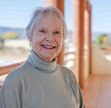Amber Polo's Blog, page 15
January 24, 2012
Writer's Butt - Part 3 Writing with Computers

Wired to Write
The internet andubiquitous wi-fi allow writing, research, and editing to take place anywhere.We're able to Tweet epics, 144 characters at a time. Japanese writers oftenwrite novels on cell phones and BlackBerries. Electronic devices allow us towork longer while still offering limited body positions compared to writing onpaper.
Try This Exercise -
Ask a friend to take a photo of you whenyou're writing. And not post it on social network sites. Do you hunch over yourkeyboard or laptop, head jutting forward, back looking like an apostrophe orquestion mark?
Writing withComputers Many aspects ofa computer user's discomfort can be alleviated with small adjustments.
Screens
Position the screen 20-24" in front of youat eye level or a few degrees lower, so your head looks straight ahead, nottilted down. This position also lessens both glare and shadows. More pixels arebetter. Choose a high refresh rate (flicker speed), at least 70 HZ.
Increase TextSize Besides eyestrain,looking at small fonts can cause a rise in blood pressure and stress. I lovetwo screens with research displayed on one and a document on the other. And theslight side-to- side eye and neck movement feels good.
Matte or GlossyLCD Screens?
Glossyscreens add color, depth, and higher contrast. Matte screens with polarizedcoating, reduce reflected light and cause a narrower viewing angle. So, unlessyou're a gamer or watch movies, a matte screen is a better choice for a writer.
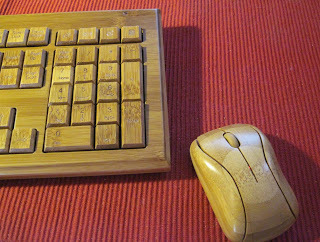
Laptops andTablet When your laptopis lower than eye level, use your eyes to look down, not your head, neck, andback. To lessen the need to bend and to reduce reflection, adjust the screen toa 10-20 degree angle. For home use, obtain a stand for your laptop or tablet,prop it up on books, or attach a separate monitor. Add an auxiliary keyboardfor position options and a mouse to provide alternative hand movements.
Hands
Try an ergonomic mouse, gel or cushionedwrist rests for mouse and keyboard, or wrist support bands. For cold, hurtingor arthritic hands experiment with a heated mouse, mouse pad, keyboard pad or amouse-hand warmer that covers the top of your hand.
OnlineDistractions
Some writersuse one computer sans internet connection exclusively for writing and anotherfor email, social networking, blogging, and promotion. I love my old AlphaSmart(Neo Direct, Inc.) word processing keyboard for writing, anywhere. With nodistracting large screen, my thoughts flow effortlessly (most of the time) frombrain, to fingers, into an easily downloaded file.
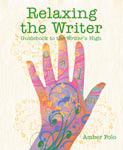
Excerpt from Relaxing the Writer Chapter 2 The Ergonomic Writer
Photos: The Impecca wireless bamboo keyboard and mouse I gave my husband for Christmas. They are green but probably not more ergonomic than most. But they are beautiful, feel good, and he loves them.
Published on January 24, 2012 00:30
Why I Write Fantasy - Pat McDermott
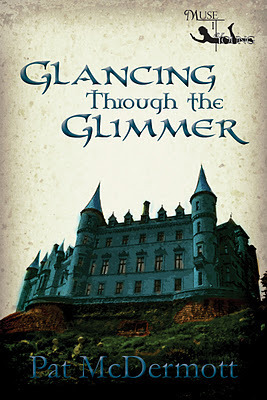
The Balm of Fantasy
Aren’t there enough troubling issues to write about for teenage readers without making stuff up?
Sure. That’s one reason why I write fantasy. Not only did I used to be a teenager, I also had two in the house for thirteen years or so. Their experiences gave me some knife-edged refreshers on what it’s like to be a teen. As if I could forget.
I recall my own teenage years well because I disliked them so much. Many teens do, for reasons ranging from embarrassing skin to curfews and cliques, STDs and mental health, body image, peer pressure, bullying, depression, drug abuse, and worse. Being a teenager is, and always has been, hard work.
Some teens find comfort reading about characters plagued by problems akin to theirs. Others prefer to bury themselves in rousing adventures that help relieve stress for a while. Those looming final exams don’t seem so desperate when vampires, werewolves, dragons, and aliens threaten the world.
During my teens, I often sought refuge in tales like Treasure Island, Great Expectations, the Hardy Boys mysteries, Peter Pan, and all sorts of fairy tales. Even better, I started creating my own escapes. I love to write and have three adventures coming soon from MuseItUp: the "Band of Roses" stories, alternate histories set in an Ireland that might have been. Glancing Through the Glimmer is the "prequel" to that trilogy.
Glimmer’s hero and heroine, Liam Boru and Janet Gleason, struggle to deal with their own teenage issues. Their problems fall by the wayside when the King of the Fairies decides he’d like to dance with Janet—for the next few centuries. Danger and magic shadow her and hinder her budding romance with Liam. What would you do if you were Janet? Or if you were Liam, could you fight fairy enchantment to save her? Can Janet save Liam when the Fairy King turns on him? (I sure hope so. I need them both for the sequel.)
Whether readers identify with a character, or whether they simply enjoy going along for the ride, fantasy offers a respite from the world’s afflictions, and not just for teens. I love all genres of YA—but I still like the fantasy best.
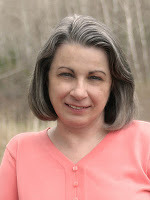 Pat McDermottBorn and educated in Boston, Massachusetts, Pat grew up in a family full of music and myths that have found their way into her stories. Her "Band of Roses" trilogy and her young adult novel, GlancingThrough the Glimmer, are romantic adventures set in an Ireland that might have been. One of her short stories, By the Light of My Heart, was featured in the recently released Mammoth Book of Irish Romance. Pat is a member of the New Hampshire Writers' Project, Seacoast Writers' Association, Romance Writers of America, and Celtic Hearts Romance Writers. Pat's favorite non-writing activities include cooking, hiking, reading, and traveling, especially to Ireland. She lives in New Hampshire, where she is currently working on Autumn Glimmer, the fairy-filled sequel to Glancing Through the Glimmer.
Pat McDermottBorn and educated in Boston, Massachusetts, Pat grew up in a family full of music and myths that have found their way into her stories. Her "Band of Roses" trilogy and her young adult novel, GlancingThrough the Glimmer, are romantic adventures set in an Ireland that might have been. One of her short stories, By the Light of My Heart, was featured in the recently released Mammoth Book of Irish Romance. Pat is a member of the New Hampshire Writers' Project, Seacoast Writers' Association, Romance Writers of America, and Celtic Hearts Romance Writers. Pat's favorite non-writing activities include cooking, hiking, reading, and traveling, especially to Ireland. She lives in New Hampshire, where she is currently working on Autumn Glimmer, the fairy-filled sequel to Glancing Through the Glimmer.Learn more about Pat McDermott at her website
& her Writing/Travel Blog (Put the Kettle On)
Published on January 24, 2012 00:00
January 21, 2012
Scrapbooking with Rene Wildes
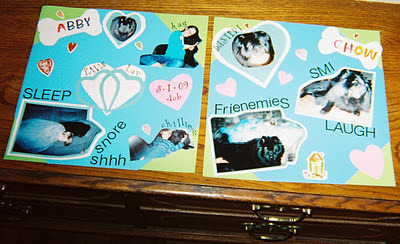
Let's face it—life is stressful. Work,family, kids' school functions, civic duties, on TOP of the writing/critiquegroups/book signings/conferences/online classes/promo/teaching/judging… Anyoneelse ready to say "ARGH!" and just throw in the old towel? (Wait, you need that towel to dodishes…but I digress…)
It's crazy-busy and very stressful.Everyone needs a distressing valve or two…or ten. One of mine is scrapbooking.I started years ago when I got sick of photo albums always falling apart andenvelopes of pictures stashed everywhere. I am a selective packrat (like my mom)and I can't bear to toss pictures away. So I have boxes of envelopes stacked onboxes of envelopes. Somewhere around the third move with three kids I said"enough already" and walked into a local scrapbooking store.
I almost walked right back out again. They'rehuge. There's tons of stuff. They have perky clerks who ask dumb questionslike, "Do you want a two-hole or a three-hole?" Huh? Say what? But I bought a scrapbook,(the clerk swore was expandable with these little screw-together gizmos) the plasticcovers, a bunch of colored 12 x 12 paper squares, alphabet letters and lots ofstickers.
It's creative and artsy and relaxes me.I love color, and combining colors and layers and working with balance andcontrast. I like informal spreads with texture. I think of a scrapbook as a wayto celebrate a specific event or person, with the photos being a window intothe heart of it. So when I was asked to do a scrapbooking blog, I had to sit downand think about why I do it. What is it about scrapbooking that makes me keepdoing it? I think it's the endless variety, how each page is different and yetstill so ME.
We're all perfectionists at heart, andare constantly pushing ourselves for bigger, better, faster. Take that playbookand throw it out the window. This is fun. This is creative. This is recreation.Don't know the meaning of that word anymore? Look it up. R-E-C-R-E-A-T-I-O-N.Notice the C-R-E-A-T ("E" implied)—this is not timed or graded or for anyonebut yourself.
What do you love? Favorite colors? Favorite styles? Favoriteseason? Favorite activities? What do you want to celebrate or showcase? This isa hobby and recreation (and honestly, only family ever sees it—or good friendswith a lot of patience!) so don't worry about getting it "right." Just get itdone with colors you like and a balance that lets you chill. You found a way toshowcase your favorite photos with your own personal touch.
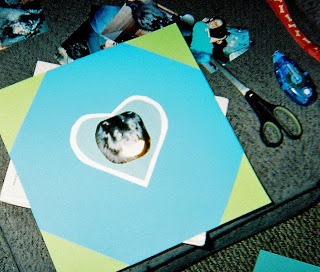 So for this demonstration blog I decidedto do a spread for our Chow, Abby. Or Abber-Chow, or Smi (for Smiley), orAbby-Monster (depending on which family member you talk to). Or New Moon'sTwilight Night—ugh, could you get any more redundant a name for a black dog?(No, we didn't name her—she came with that one, poor thing.)
So for this demonstration blog I decidedto do a spread for our Chow, Abby. Or Abber-Chow, or Smi (for Smiley), orAbby-Monster (depending on which family member you talk to). Or New Moon'sTwilight Night—ugh, could you get any more redundant a name for a black dog?(No, we didn't name her—she came with that one, poor thing.)The first thing I do is look at thephotos, and think of a good background color that won't clash. Since the kidswere sporting blues and greens, I selected lime green & turquoise to compliment.The key to informal is to mix and match—and keep the right angles to a minimum.Layering adds depth.
Cropping photos around just the subject adds a weird sortof 3-D effect, esp. if you don't frame it but just put it down on the page. Ifyou do a 2-page spread, a certain amount of mirroring comes into play.
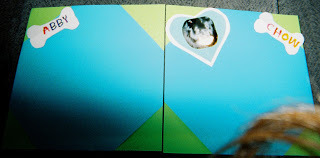
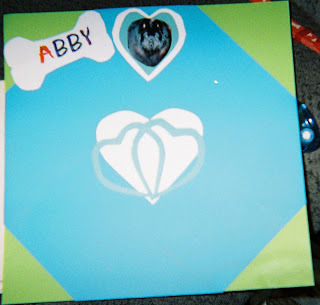 Once thepages/background is selected, I framed the two pages with the dog bones on theoutside corners. Since Abby's a dog, goes toward theme. One I did "ABBY" andone I did "CHOW". The two heads shots I decided to frame in hearts, again toavoid the stiffness of too many right angles and because we love her. A lighterturquoise didn't show up very well against the darker backdrop, so I did asecond, larger framing in white. It provides a clear delineation and ties in tothe white of the bones. I did the white heart with a list of her favoritethings, written in pink highlighter to match the pink hearts. Scatter the photos around the page. Swapthem around, turn them helter-skelter until you reach a "that's it" moment.Your inner voice will tell you when it's right. There's no right or wrong.You're not being graded on it. It's all about your own sense of harmony andbalance. Overlapping is fine, crooked is fine. I cut everything freehand, and Imix and match lettering. Both of those contribute to a casual, homemade kind offeel. Once the photos are where you want them, tape them down. Any scrapbookingtape or squares work.
Once thepages/background is selected, I framed the two pages with the dog bones on theoutside corners. Since Abby's a dog, goes toward theme. One I did "ABBY" andone I did "CHOW". The two heads shots I decided to frame in hearts, again toavoid the stiffness of too many right angles and because we love her. A lighterturquoise didn't show up very well against the darker backdrop, so I did asecond, larger framing in white. It provides a clear delineation and ties in tothe white of the bones. I did the white heart with a list of her favoritethings, written in pink highlighter to match the pink hearts. Scatter the photos around the page. Swapthem around, turn them helter-skelter until you reach a "that's it" moment.Your inner voice will tell you when it's right. There's no right or wrong.You're not being graded on it. It's all about your own sense of harmony andbalance. Overlapping is fine, crooked is fine. I cut everything freehand, and Imix and match lettering. Both of those contribute to a casual, homemade kind offeel. Once the photos are where you want them, tape them down. Any scrapbookingtape or squares work.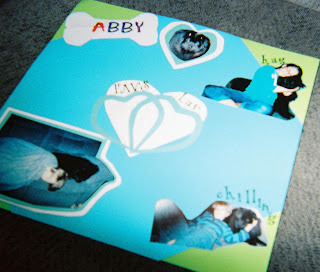 Once the photos or down, I do mywording/labels/captions. I've used three different fonts/styles of letters formy spread. You'll find yourself running out of "a" and "e" and "s" and have asurplus of "p" and "x", so I have a surplus of half-sheets of unusable letters."V" upside down makes a readable "A" in a pinch, and you can make an "E" bylaying an "L" atop an "F".
Once the photos or down, I do mywording/labels/captions. I've used three different fonts/styles of letters formy spread. You'll find yourself running out of "a" and "e" and "s" and have asurplus of "p" and "x", so I have a surplus of half-sheets of unusable letters."V" upside down makes a readable "A" in a pinch, and you can make an "E" bylaying an "L" atop an "F". Again, "mix-and-match" effect. (Kind of like myhouse.) Then you fill in the gaps or holes on the page with…whatever.Compliment or contrast. I added extra hearts, but in hot pink for contrast, abit of "pop" to keep it playful. Chows have a fearsome reputation as a guarddog, which Abby lives up to, but I wanted to celebrate her playful-silly-family-petside that apparently only her family will ever see. Like her sneaking apiece of bread…or hanging out with the cat.

Beads, leaves, doilies, feathers,quilting squares, the label from your favorite bottle of wine…the variety inunlimited—like your imagination. Grab a photo that makes you go "awww" or mistyor forgetful for a moment. Start with that. What was the moment? When did ittake place? What do you remember hearing, smelling, saying? Use the backgroundpaper & color to highlight the theme or event. Fall colors, Christmasdecorations…you get the idea. Highlight a favorite song or poem. Give yourphotos captions, make dialogue balloons so people in photos can speak theirpiece. What they really said…or what they might have been thinking! You can beas playful or serious as you wish. This is an escape…decorate it however youwant. Give yourself permission to just let go.
Seriously, the world can hold
its ownself up for an hour.
Renee Wildes grew up reading fantasy authors Terry Brooks and Mercedes Lackey and is a huge Joseph Campbell fan, so the minute she discovered romance novels it became inevitable that she would combine it all and write fantasy romance. Renee is a history buff, from medieval times back to ancient Greece and Sparta. As a Navy brat and a cop's kid, she gravitated to protector/guardian heroes and heroines. She's had horses her whole life, so became the only vet tech in a family of nurses. It all comes together in her Guardians of Light series for Samhain – fantasy, action, romance, heroics and lots of critters!
Find Renee at: Her Blog And Samhain
Published on January 21, 2012 08:23
January 17, 2012
Yoga - Finding a Class
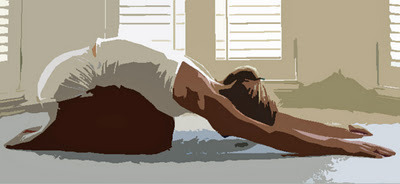
The New York Times Article on January 5 on the dangers of yoga was soon followed by the diverse comments that followed and thoughtful Elephant blogs.
Yoga: Doing More Harm Than Good? "Yoga Can Wreck Your Health." (7 Ways To Avoid It) The Hero's Foot & the Cedar Branches: The Gift & Reality of Injury in Yoga PracticeYoga Need Not Wreck Your Body Not to add more words to the discussion I'd like to share the purely personal advice I give when asked about yoga.Yoga
Full disclosure: Iam a yoga teacher. After neck surgery, yoga helped me when nothing else did, sonaturally, I believe yoga provides the best short and long term way to relax.It's not magic; it just feels like it.
Benefits for the Writer • Removes physicaltension and teaches relaxation techniques• Builds focus andconcentration and may teach meditation• Increasesflexibility, balance, and strength for the skeletal, muscular and nervoussystems• Teaches breathingand improves circulation
Finding a YogaClass - There are many, manyyogic traditions and sub-styles of yoga. "Hatha" is not a yoga style. The termmeans a class will be mostly "postures." If you haven't tried yoga or attendeda class in a long time, do not buy a DVD or Nintendo Wii Fit Yoga and plungein. Find a teacher. Especially if you have injuries or limitations, a teachercan help you modify stretches to fit your body. With a wide variety of yogalevels to choose from, try three teachers or classes before you decide yoga isnot for you. Use common sense and your intuition.
Even if you're veryfit, start with a Gentle Class . Callthe teacher and discus any limitations you may have. If you're not comfortablewith the answers, call another. A ChairYoga Class or a Yoga for Bad Backs class is also a good choice and will provide tips to take home and use at yourdesk. Teachers trained in RestorativeYoga can teach you how to set up relaxing passive stretches and how to usepillows, blankets, bathrobe ties, and stacks of books as props.
Clues You'veFound the Perfect Yoga Class–
Did the level of the class feel right?
If your body told you it needed a hard"workout" before it could relax, did you receive it?
If you needed only gentlestretches, did you get that?
Some classes are more strenuous and/or faster thanothers. Did you feel no pain or soreness after the class? Or the next day?
Wereyou comfortable even if you didn't wear a cute yoga outfit?
And mostimportant
Did you feelbetter at the end of the class than at the beginning?
Did the Class Offer • Frequentreminders to breathe• Suggestions foradapting each pose for limitations• Contraindicationsfor special conditions (hypertension, etc.)• Reminders of thenoncompetitive nature of yoga• A minimum of 10minutes of relaxation at the end
 Excerpt from Relaxing the Writer
Section IV. Exploring other Attractions - Yoga
Excerpt from Relaxing the Writer
Section IV. Exploring other Attractions - Yoga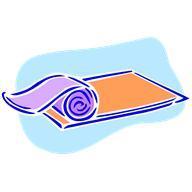
Published on January 17, 2012 15:13
January 12, 2012
Contemplation - Arlene Eisenbise
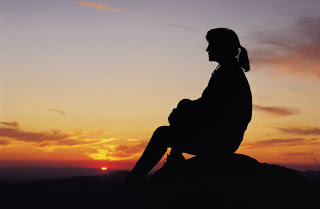
Contemplation: Why and Howby Arlene Eisenbise
The genius, Albert Einstein, would walk about and open himselfto brilliant thoughts which benefited mankind. I don't profess to be a geniusbut have had great direction, for example, while mowing the lawn. I credited itto the "hum" of the motor. Sound can transport us to another dimension.Quiet time spent in contemplation is beneficial on manylevels—for healing, for relaxation, and for opening the consciousness to thecreative energy. That is my link between contemplation and writing.
I begin by finding a private space, if possible, since Iprefer to chant out loud. However, I do not limit myself to a particular placeor setting. Chanting out-of-doors amid the sounds of Nature is an upliftingexperience. Next I place my attention on the spot between the eyebrows calledthe Spiritual Eye, the Third Eye, or the pineal gland. Any number of mantras—aword meant to link one with Spiritual Energy—produces results. My favorite wordis HU (pronounced as hue). The HU is a universal word, an ancient love song toGod. By chanting the love song prior to writing, I open my consciousness to thecreative energy.
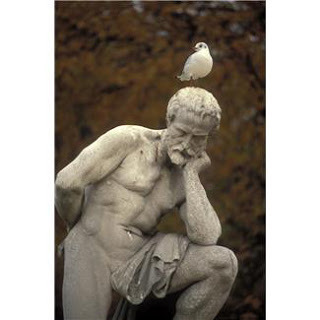 While writing TheKeepers of Atlantis, I benefited from numerous experiences which Iattributed to contemplation. I felt myself "going deep," as though into thedepths of an ocean, and would "be" in Atlantis. In that state, I visualizedscenes, was given dialog or an entire chapter for the novel. There is scientificproof that the pineal gland or Third Eye is linked to the retina enabling us tovisualize during contemplation.
While writing TheKeepers of Atlantis, I benefited from numerous experiences which Iattributed to contemplation. I felt myself "going deep," as though into thedepths of an ocean, and would "be" in Atlantis. In that state, I visualizedscenes, was given dialog or an entire chapter for the novel. There is scientificproof that the pineal gland or Third Eye is linked to the retina enabling us tovisualize during contemplation.I do believe that there is a band of energy circling ourplanet that writers can tap into. Proof lies in the story of the two writerswho had never met and did not reside in the same country, but they both wrotethe identical story and submitted it to the same publisher.
I find that taking 15-20 minutes daily away from the fastpace of life is a great gift to my creative self.
Arlene Eisenbise (Writing as ArleynaGarr)Be careful whatyou ask for. I neglected to heed the warning. First, I asked for a challenge. Next, I responded to an adfor a creative writing class. That happened years ago, but the challenge as a writercontinues. I was a successful freelancer for Wisconsin newspapers.Several of my poems were published in periodicals. I wrote plays and directed children's drama.
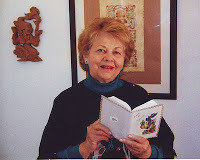 I read a young adult novelthat convinced me to try that genre. I joined the Society of Children's BookWriters and Illustrators (SCBWI), joined a local SCBWI critique group, and Inow focus on writing fiction. I am a member of the Professional Writers ofPrescott (PWP) and served as PWP Vice President-Programs forthree years.
I read a young adult novelthat convinced me to try that genre. I joined the Society of Children's BookWriters and Illustrators (SCBWI), joined a local SCBWI critique group, and Inow focus on writing fiction. I am a member of the Professional Writers ofPrescott (PWP) and served as PWP Vice President-Programs forthree years. I recently published a short story in Writing Raw, an e-zine and am proud that the second book of my Crystal Skull trilogy, The Keepers of Lubaantun, succeeded through two levels of the highly competitive Amazon Breakthrough Novel Contest in 2011.
Learn more about Arlene by visiting Wordshaping and my interview with her as she talks about crystal skulls and Atlantis.
Published on January 12, 2012 20:00
Contemplation - Arlene Eisenbane

Contemplation: Why and Howby Arlene Eisenbane
The genius, Albert Einstein, would walk about and open himselfto brilliant thoughts which benefited mankind. I don't profess to be a geniusbut have had great direction, for example, while mowing the lawn. I credited itto the "hum" of the motor. Sound can transport us to another dimension.Quiet time spent in contemplation is beneficial on manylevels—for healing, for relaxation, and for opening the consciousness to thecreative energy. That is my link between contemplation and writing.
I begin by finding a private space, if possible, since Iprefer to chant out loud. However, I do not limit myself to a particular placeor setting. Chanting out-of-doors amid the sounds of Nature is an upliftingexperience. Next I place my attention on the spot between the eyebrows calledthe Spiritual Eye, the Third Eye, or the pineal gland. Any number of mantras—aword meant to link one with Spiritual Energy—produces results. My favorite wordis HU (pronounced as hue). The HU is a universal word, an ancient love song toGod. By chanting the love song prior to writing, I open my consciousness to thecreative energy.
 While writing TheKeepers of Atlantis, I benefited from numerous experiences which Iattributed to contemplation. I felt myself "going deep," as though into thedepths of an ocean, and would "be" in Atlantis. In that state, I visualizedscenes, was given dialog or an entire chapter for the novel. There is scientificproof that the pineal gland or Third Eye is linked to the retina enabling us tovisualize during contemplation.
While writing TheKeepers of Atlantis, I benefited from numerous experiences which Iattributed to contemplation. I felt myself "going deep," as though into thedepths of an ocean, and would "be" in Atlantis. In that state, I visualizedscenes, was given dialog or an entire chapter for the novel. There is scientificproof that the pineal gland or Third Eye is linked to the retina enabling us tovisualize during contemplation.I do believe that there is a band of energy circling ourplanet that writers can tap into. Proof lies in the story of the two writerswho had never met and did not reside in the same country, but they both wrotethe identical story and submitted it to the same publisher.
I find that taking 15-20 minutes daily away from the fastpace of life is a great gift to my creative self.
Arlene Eisenbane (Writing as ArleynaGarr)Be careful whatyou ask for. I neglected to heed the warning. First, I asked for a challenge. Next, I responded to an adfor a creative writing class. That happened years ago, but the challenge as a writercontinues. I was a successful freelancer for Wisconsin newspapers.Several of my poems were published in periodicals. I wrote plays and directed children's drama.
 I read a young adult novelthat convinced me to try that genre. I joined the Society of Children's BookWriters and Illustrators (SCBWI), joined a local SCBWI critique group, and Inow focus on writing fiction. I am a member of the Professional Writers ofPrescott (PWP) and served as PWP Vice President-Programs forthree years.
I read a young adult novelthat convinced me to try that genre. I joined the Society of Children's BookWriters and Illustrators (SCBWI), joined a local SCBWI critique group, and Inow focus on writing fiction. I am a member of the Professional Writers ofPrescott (PWP) and served as PWP Vice President-Programs forthree years. I recently published a short story in Writing Raw, an e-zine and am proud that the second book of my Crystal Skull trilogy, The Keepers of Lubaantun, succeeded through two levels of the highly competitive Amazon Breakthrough Novel Contest in 2011.
Learn more about Arlene by visiting Wordshaping and my interview with her as she talks about crystal skulls and Atlantis.
Published on January 12, 2012 20:00
January 9, 2012
Writer's Butt - Part 2 - Desks & Chairs

Every writer needs a desk!
Not true. Not all writers write sitting at desks. Probably they are the ones who do not suffer from Writer's Butt.
Standing &Treadmill Desks
Ernest Hemingway used astandup desk, as did Winston Churchill who wrote some prettyhefty tomes. Virginia Woolf,Thomas Wolfe,and Vladimir Nabokov were also standingwriters. Men's Health magazine installed standing desks in their offices. Ifyou do buy a high desk or convert a conventional one, be sure your lower armsand hands can be placed at a right angle. Too low, shoulders will hurt. Toohigh causes slumping and awkward wrist positions.
Recently anincredibly expensive height-adjustable desk with a semi- recumbent ellipticalmachine has been advertised to help desk jockeys pedal as they work.
Literary SideTrip - John Grishamuses a Sharper Image chair with a built-in massager to rub his back while hewrites.
Chairs
If you're not going to stand, your chairmust fit you perfectly. Lumbar supports on ergonomic chairs must be positionedat the base of your spine and contoured to your back to really support. Be surethe chair adjusts, has excellent back support, and wheels. If feet don't reachthe floor, use a foot support. Try out a kneeling chair or a ball chair. It'salso nice to have a second (reading) chair in your office to offer a change inposition.
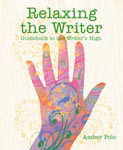 Excerpt from Relaxing the Writer
Chapter 2 The Ergonomic Writer
Excerpt from Relaxing the Writer
Chapter 2 The Ergonomic Writer
More Alternatives & Solutions
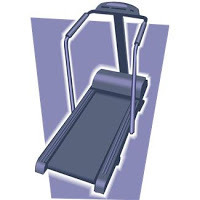 Consider a Standing Desk or an Adjustable Height DeskLearn how to make your own for very few dollars Build your own Standing DeskMore DIY Standing DesksAnd more
Consider a Standing Desk or an Adjustable Height DeskLearn how to make your own for very few dollars Build your own Standing DeskMore DIY Standing DesksAnd more 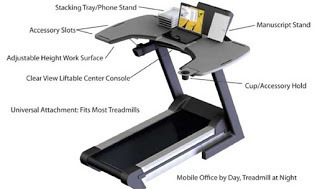 Combine aTreadmill and a Desk
Combine aTreadmill and a Desk
One man made his own for $39 and lost 57 lbs in 1 year!
Make Your Current Chair Better
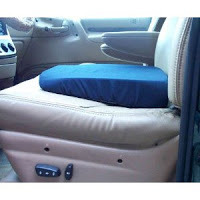 BestChairCushions did a review of wedge chair cushions and picked the exact same one I like best (after several tries). I now own 3 and use 2 in my car. Available from Amazon. For sitting anywhere, try to sit so your knees are lower than your hips.
BestChairCushions did a review of wedge chair cushions and picked the exact same one I like best (after several tries). I now own 3 and use 2 in my car. Available from Amazon. For sitting anywhere, try to sit so your knees are lower than your hips. Another favorite cushion to alleviate Writer's Butt is a wedge shaped inflatable vinyl that encourages small movements. It's now on my kneeling chair to make the sitting angle even better for me.
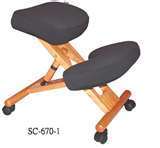
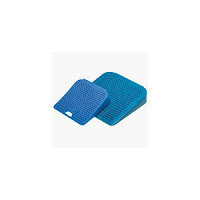
Some writers love Balance Ball Chairs!
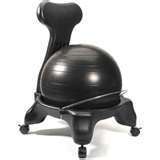
Check out the new semi- recumbent ellipticalmachineand a simpler version.
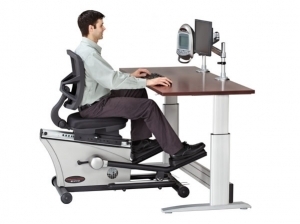

Part 3 of Writer's Butt will concentrate on more ideas to make your computer work less stressful. And Part 4 brings more ideas to make your writing space relaxing (but not too).
Published on January 09, 2012 00:30
January 6, 2012
How Writers Relax - Mike Bove
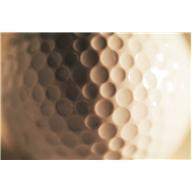
Welcome Mike Bove, mystery writer and golfer!Amber: What keeps you a relaxed creative writer? Orbrings you back when stress takes over?
Mike: In order to really get into a writing session I needto have my head clear. To keep my mind from wandering, impending choresor responsibilities must be taken care of first. I am most relaxed in the morning. I am ready to write after a shower, coffee, and thenewspaper. Later in the day I am most likely to have a good session afterfifteen minutes in the hot-tub, especially if a round of golf or yard workpreceded it. That fifteen minutes usually includes breathing exercisesand thoughts of what's next in the manuscript. I don't think I get overlystressed about most situations. Take it as it comes, do what you areable, move on.
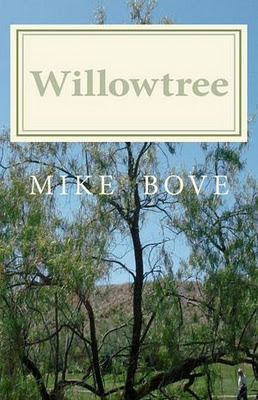
Amber: How does golf relax you? Using the categories in"Relaxing the Writer" would you call golf meditative, active, or sensual/artisticfor you?
Mike: If you ask me questions like this about golf, youmight get a new book from me. Golf can be relaxing and it can be verystressful. The whole point to playing golf is twofold. One, relaxand have fun. Two, the stressful part, it's a competition (againstyourself or someone else) so you are trying to achieve the best score. Without one, two is impossible. I have learned overmany years in the game that relaxing, physically and mentally is vital toscoring well. How? Be positive, never entertain negative thoughts.
Sometimes (many times) a shot doesn't happen as I pictured it. Itry to go right on to planning the next shot after a bad one. A Frenchword may be uttered, but that's it, it's over.
I'm in a beautiful place out inthe fresh air, feeling the sun and breeze, playing a game with friends. Isee and smell acres of manicured green grass, there are lots of trees, a pond,birds and rabbits. So I relax, it's easy. Thoughts seldom wander tohealth, finances, writing, or the broken water pipe at home. Maybe I playgolf because it is relaxing.
For me, I think golf would fit into allof the categories in Relaxing The Writer. I will do briefbreathing exercises at certain times to help focus on a shot. It iscertainly both a physical activity requiring some skill, and and an exercisefor the mind in choosing the correct club and action for each shot.
Amber: How has golf influenced yourwriting?
Mike: style, came naturally, I think, from being immersedfor so long in the golf culture. Conversations, settings,activity, and people on and around the course all provide ideas in developingcharacters and a story. I am really comfortable when in the whole golfatmosphere. I am much more outgoing there than in most other socialsituations. I guess I am very relaxed there. And, as you surely know,being relaxed can help a great deal when writing.
Amber: Since fiction (even cozymysteries) is filled with conflict, what do your characters do to releasestress?
Mike: Some do the normal things like yelling, joking,smoking weed. Inthe next book Bruce uses the hot-tub a lot. He will bake somebread or walk his dog, or go out to eat.
An excerpt from Willowtree:
Keely sat at my feet with her hedge hog "baby" in the livingroom while I tried to line up the facts that I learned from Holton, Ben, andMrs.R. during the past day and a half. Actually they didn't mean a lot,just facts, things we knew. But strung together, these facts all botheredme. Calvin dead, Martin dead, both near the ranch. Bob, or Squeek supposedlyweird, Vernon, Doc's buddy, long gone. Miggy-Mike. Maybe allunrelated, maybe not.To stop the race of Persistent Automatic Thoughts fromtaking over, I decided to bake the bread. That was one, golf was another,activity that kept PATS away. I formed the round loaves and placed themon cornmeal sprinkled on pie plates. My invention, at least I never heard ofanyone baking bread in pie plates. I reasoned that the heat from the sloping,round walls of the pie plate made the finished loaf perfectly round. They sat,rising, under a clean towel for over an hour while I checked my email. I signedin on the Golf Association website and got my handicap info up to date.The three dough balls were becoming bread in the hot ovenwhen Genny came into the aroma filled kitchen. She said that it reminded her ofthe wonderful smell outside the bakery she passed while walking to school. Genny had a good day at the nursing home. She said she enjoyed workingthere. It was nice to have her home for a quiet evening. Genny wasanother thing that kept PATS away. With her, all of my attention was hers.I loved her so much. Away from her, many PATS were about her.We enjoyed a gigantic salad she made with fresh veggies shepicked up at a Sedona farmers market on the way home. Also a whole loafof warm bread.
 "Willowtree A Bruce DelReno Mystery" is Mike Bove's mystery celebrating his love of golf and the retired life in Arizona. Mike grew up in Vermont. He wrote articles and drew cartoons for his college newspaper. Mike was involved as an actor and director in high school, college and community theater. He adapted a Russian folk tale, The Nosebag, for the stage, produced and directed it. He was a public school teacher, track, and soccer coach before moving to Cape Cod. There he became an avid fisherman and golfer. He joined the Postal Service, transferred to Sedona, retiring in 2010.
"Willowtree A Bruce DelReno Mystery" is Mike Bove's mystery celebrating his love of golf and the retired life in Arizona. Mike grew up in Vermont. He wrote articles and drew cartoons for his college newspaper. Mike was involved as an actor and director in high school, college and community theater. He adapted a Russian folk tale, The Nosebag, for the stage, produced and directed it. He was a public school teacher, track, and soccer coach before moving to Cape Cod. There he became an avid fisherman and golfer. He joined the Postal Service, transferred to Sedona, retiring in 2010."Willowtree" Is Mike's first novel in the Bruce DelReno Mystery Series. He lives in Cottonwood, AZ with wife, Jane, and Golden Retriever, Ceile.
Learn more about Mike and Willowtree
His website His blog Amazon (print and Kindle)
Barnes and Noble Smashwords
Published on January 06, 2012 00:30
January 2, 2012
Writer's Butt - Part 1
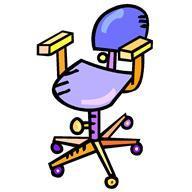 Do you have Writer's Butt?
Do you have Writer's Butt?Sitting too long on a regular basis creates more than completed manuscripts.
Doing yoga never got me that mythical "yoga butt," but "writer's butt" definably crept up on me. Duringthe time I was writing Relaxing the Writer I dealt with a sore hip andresearched several therapies and therapists and tried a few "props"and techniques.
The "Writer's Butt" series will first look at the problem and then ways tomake the problem smaller.
Writer's Butt - Part 1
Before the internet, writingincluded a lot more physical tasks. Writers walked to a stationery shop forpaper and ink or a few blocks to a library, drove or took a bus or subway to alarge research library, or traveled to a distant city to peruse specializedcollections and conduct interviews.
In libraries the writer pulledopen card catalog drawers and flexed fingers through the cards, hiked throughmiles of stacks, stretched up or squatted down, then lifted and carriedtwenty-pound tomes to a carrel.
Some writers still doold-fashioned tasks, but many more turn on computers to find research materialsin London or Tokyo. Others use Wikipedia as their all-night convenience store.
The scariest fact I found in myresearch was a 2010 study by the American Cancer Society which lumped writerswith obsessive TV watchers in the field of "inactivity studies" concerned withhealth, longevity, and obesity. The study found that sitting time was independently associated with mortality,regardless of physical activity.
Todd Sinett, author of TheTruth About Back Pain, says sitting not only lessens blood flow to the discsthat cushion your spine (wearing them out and stressing your back), but puts30% more pressure on the spine than standing or walking. 80% of Americanssuffer from back pain at some point in their lives. If you don't already haveissues, you need preventative measures.
If that's not enough, a 2011study in the American Journal ofEpidemiology reported that people who spent a decade or more doingsedentary work were almost twice as likely to develop cancer of the lower coloncompared to those with physically active jobs, regardless of all recreationalphysical activities. Inactivity also may encourage tumor growth due toinflammation.
What's a writer to do whenhours at a gym or track cannot make up for time spent sitting at a desk?
Basic tips:
Take breaks Stand upfrequently Move around

Excerpt from Relaxing the Writer Chapter 2 The Ergonomic Writer
Recent Articles:
"To Decrease Cancer Risk, Stand Up" by Sophie Quinton in the National Journal (November 3, 2011)
"Weaving Actitivy into Your Work Day Important to Maintain Good Health,"
James Levine, M.D. PhD, Endocrinology Mayo Clinic in Mayo Clinic Medical Edge Newspaper (November 4, 2011)
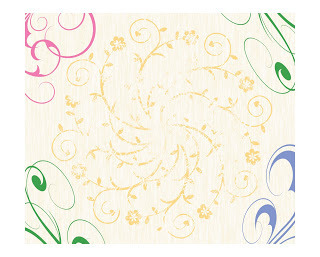
Published on January 02, 2012 15:14
December 31, 2011
Wishes for a Relaxed & Creative New Year!

May Your 2012
Burst with Creativity!

Follow Relaxing the Writer blog to help stay relaxed and creativethroughout the New Year.
Published on December 31, 2011 09:19

